10 Healthy Recipes That Could Kill You

Image: Mila Zinkova
We love food. Period. So, we’re always on the search for the nouveau, the bold and the brave tastebud sensations. And while we swerve on the side of healthy fare, we’re not averse to a little “wow” factor or even danger when discovering new recipes – not to say we’d actually eat these things so much as gawk at them. Still, that doesn’t make it any less interesting to learn of foodstuffs from around the globe whose ingredients are potentially hazardous, revolting or even deadly – but can still be healthy too! From the exotic to the everyday, here are 10 healthy recipes to die for. Literally.
10. Inky Cap Mushroom Soup
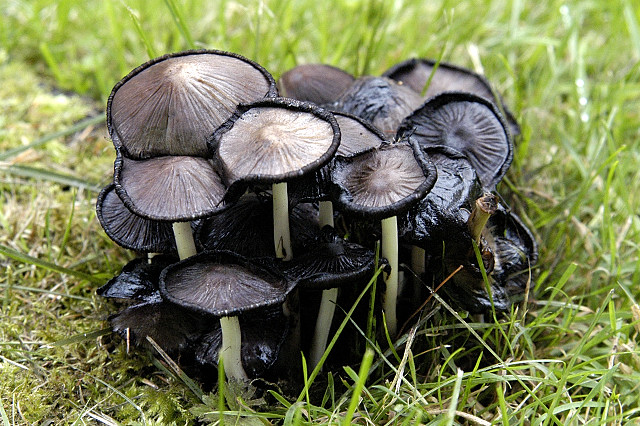
Image: James Lindsey
We all know mushrooms are full possibilities – ranging from the poisonous to the gourmet to the trippy. The Inky Cap falls under the category of a ‘shroom that’s fine to consume if you can go sober – for at least a day. When eaten within a few hours of drinking alcohol, the Inky Cap is toxic – hence it’s folklorish name, tippler’s bane. Antabuse syndrome is the more-than-unpleasant illness faced by those who heed not this warning; symptoms include flushes, vomiting and palpitations – and the more booze you abuse, the worse it gets.

Image: foodistablog
Though no deaths have been recorded as a result of this malign mixing of foodstuffs, similar alcohol-sensitive concoctions have been known to cause heart attacks – so fatalities are within the bounds of possibility. Thus, while we certainly do recommend some healthy mushroom soup (made with olive oil, garlic, flour, vegetable stock, skim milk, sour cream, egg yolk and seasoning), and we do so love the phosphorus, selenium, potassium and many other minerals found in our mushroom friends, we don’t honestly recommend actually using inky caps in the recipe. Stick to good old fashioned champignons – and enjoy a glass of wine!
9. Hákarl

Image: Audrey
One thing’s for sure: We’d rather be chewing on cubes of cured shark meat than swimming with this menacing creature in the ocean. But Iceland takes that pronouncement a step or two further, where Hákarl is one of the country’s traditional delicacies. Smelling at best like a basket of dirty kids’ socks smothered in cleaning fluids, this is the type of foodstuff to put off all but the most die-hard gastronomy gourmets. Still, if you can get past the overpowering aroma of ammonia while holding onto your breakfast, you’ve clearly got what it takes to rub shoulders with the locals. Going on taste and smell alone this is hardcore food, but if it’s not prepared correctly it verges on the homicidal.

Image: Chris 73
When it was alive, Hákarla was a giant Greenland shark, swimming free in Arctic waters. Then it was caught, gutted and decapitated before being left in a hole for several months with rocks piled on top of it to squeeze out its body fluids. After being cut into strips and hung up to dry, the shark is more or less ready to eat. Why all the rigmarole? The fishy flesh is poisonous when fresh due to its high content of uric acid and trimethylamine oxide, a toxin that produces effects similar to extreme drunkenness. If you ever plan on trying this snack, apparently it’s available in most Icelandic supermarkets and restaurants. It’s probably better for you than most red meats too. Still, think we’ll pass…
8. Nutmeg Cake

Image: Mila Zinkova
Nutmeg: key ingredient in culinary delights ranging from Jamaican jerk chicken and Japanese curry powder to mulled wine and pumpkin pie. Nutmeg: potentially harmful hallucinogenic drug – and not in a recreational sort of a way. Consume in low quantities and dinner will run swimmingly, but go much beyond the amounts suggested in your cookbook – say to a whole seed – and things could start to turn not only weird but potentially dangerous. Myristicin, nutmeg’s psychoactive compound, will kick in, leading to hours on end of anxiety, hallucinations, giddiness, convulsions, headaches, palpitations and dehydration.

Image: SanFranAnnie
Death by nutmeg poisoning has only actually been recorded twice, but those cases alone, combined with the tripped out sickness of “nutmeg psychosis,” should be enough to make you take care when spicing up the Christmas eggnog. Don’t stress though, as when used sparingly, nutmeg has health benefits such as lowering blood pressure, relieving stress and reducing inflammation. Try nutmeg cake made with eggs, water, vanilla extract, sugar and cream of tartar, served with warm peach sauce; just take care to keep to one teaspoon of ground nutmeg rather than six. You know what they say about too much of a good thing.
7. Baked Giant Bullfrog
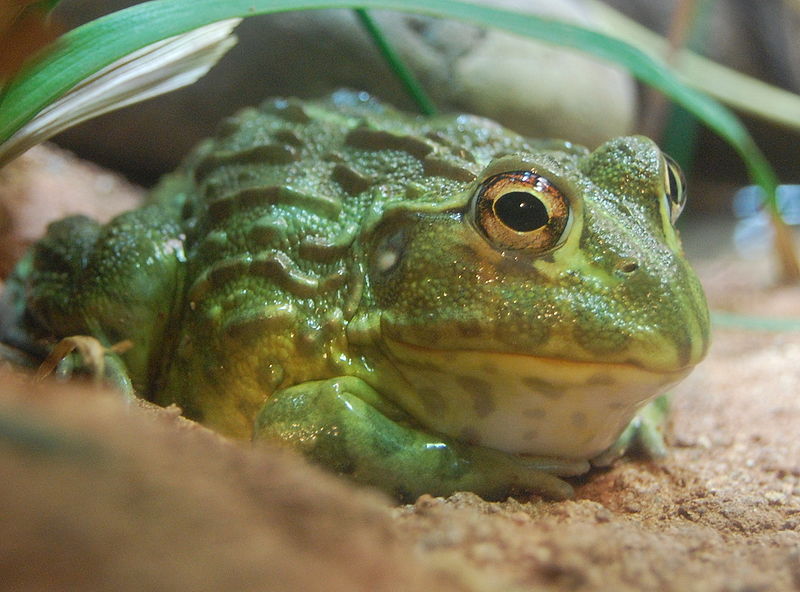
Image: Steven G. Johnson
If the idea of frogs’ legs gets your taste buds excited and African cuisine is your thing, this next entry might be the gastronomical adventure you’ve been waiting for. In north-eastern Namibia, the giant bullfrog is traditionally eaten, but whereas the French only indulge in the legs of our amphibian friends, the people in this part of Africa go the whole frog and eat everything but the animal’s stomach and intestine. So far, so gross, but here’s where the custom gets not only yucky but dicey. See, these African bullfrogs contain a poison, possibly secreted through the skin, that causes a kind of temporary kidney failure experienced as burning in the urethra, and in extreme cases, perhaps even death.

Image: Trisha M Shears
But they’ve got it down to a science – eating frogs safely that is. One is only eating mature frogs which you’ll know they are once they begin croaking; another involves cooking them in pots lined with a certain type of wood which is thought to neutralize the toxicity. Not convinced? Just think of the nutritional benefits of frogs’ legs: while high in cholesterol, they’re low in saturated fat and packed with thiamin, riboflavin, potassium, iron and more. Still not toadally (had to do it) convinced by the idea of baked bullfrog? Not even served with French fries? We’ll forgive you.
6. Cassava Bread

Image: Inespm
The starchy stuff extracted from the dried root of the cassava plant, tapioca is used in recipes all over the world. Described as akin to a banana/potato hybrid, tapioca’s a super thickening agent found in Native American cassava bread, tapioca pudding and more. Although low in protein, it’s high in calcium, phosphorus, vitamin C, and it’s gluten-free too. The downside: If the bitter cassava – fifty times more toxic than its sweet counterpart – is eaten raw or isn’t processed properly, it has the potential to kill. Why? Think an Agatha Christie novel: cyanide poisoning.

Image: Midori
Cassava needs to be soaked and boiled to get rid of its toxic compounds. Forgo the treatment, eat too much tapioca and it could spell danger in the grim shape of the permanently-debilitating paralytic disease known as konzo, whose name means “bound legs” in the language of the Congolese people it first affected – an apt description of its effects. When making cassava bread, the root is dried, crushed into a paste, strained to get rid of the poisons in a noxious, milky liquid before it can be used as the flour in this otherwise wholesome recipe. We think we’d dare have a nibble of these crackers – assuming we knew the baker… well.
5. Casu Marzu

Image: Freek Janssens
Casu marzu may sound intriguing, but don’t be misled by its exotic name. Found on menus in Sardinia, this is a sheep milk cheese with a disgusting difference. Its soft texture is the result of a unique treatment process: rather than merely fermenting, it decomposes courtesy of the digestive juices of – get this – live maggots. The 0.3 inch-long larvae hatch inside the block of Pecorino after mommy cheese flies have been allowed to lay thousands of eggs there. But it gets worse. Casu marzu is only served with the maggots still alive, as once they die the cheese soon becomes toxic.
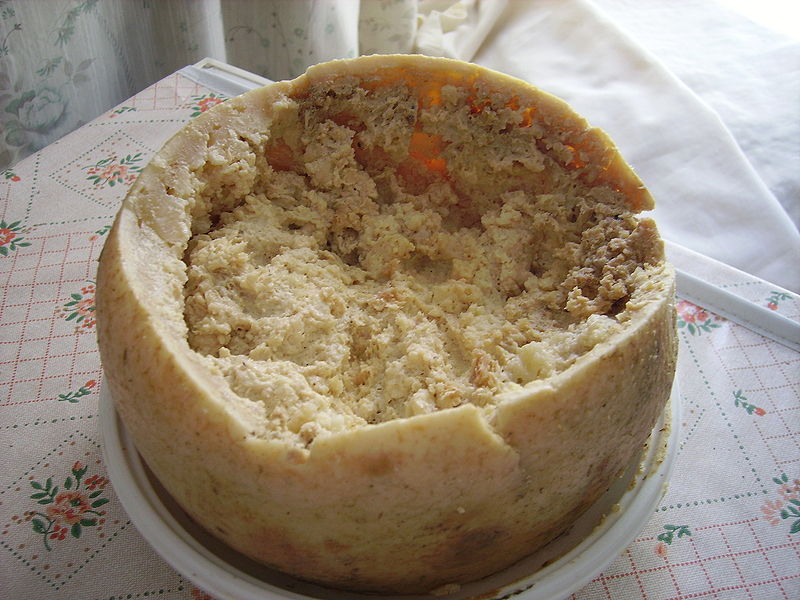
Image: Shardan
Those not keen on consuming the wriggling worms starve them of oxygen in paper bags then brush them off, or simply shield their faces from the little suckers – each of which can leap 6 inches through the air. Other folks who opt to swallow them are at risk of contracting enteric myiasis, an infection that causes severe stomach cramps, nausea and possibly worse, as the hungry larvae can survive in the stomach and try to burrow through the body with their formidable mouthhooks. Attempts to ban the cheese have failed on grounds that its recipe is thousands of years old. But how is it a healthy option? Well, sheep’s milk is richer in minerals than cow’s, and in casu marzu the high quantities of fat are broken down by the maggots. Still, as a delicacy in equal parts risky and revolting, it’s one we think we’ll avoid. For a lifetime.
4. Ackee and Saltfish

Image: gailf548
Any foray into Jamaican fare wouldn’t be worth its salt without trying their national dish: ackee and saltfish. Prepared using salt cod, onions, tomatoes, spices and of course ackee, the ingredients are sauteed then served with hard dough bread, deep fried dumplings or, for healthier types, breadfruit or boiled green bananas. What’s ackee? It’s a fruit that grows in tropical parts of the world which, when prepared properly, is highly nutritious, containing vitamin A, zinc, protein and essential fatty acids. Boiled and combined with other flavors, ackee is simply scrumptious – its soft, meaty texture like a healthier answer to scrambled egg… unless it isn’t ripe.

Image: kaiton
When it’s ready, ackee glows yellow-orange and splits open revealing soft, spongy flesh; but eat these sensuous looking insides before they’re ready, don’t cook them properly or consume the seeds, and you could wind up in a world of pain. Dangerous hypoglycin alkaloid toxins can bring on symptoms of vomiting, seizures, coma and even death in a condition known as Jamaican vomiting sickness. Still, before we put you off Jamaican cuisine forever, take comfort in the fact that the imported canned ackee you’re likely to eat is closely monitored by the Food and Drug Administration. Now, avoiding canned food is a whole other issue.
3. Sannakji

Image: LWY
Like squid? Love octopus? How about animal torture? Then this tasty next dish courtesy of Korean cookbooks could be just what you’re looking for. As in other southeast Asian countries, raw seafood is part of the local cuisine. This particular recipe sounds simple to prepare; it involves dicing a baby octopus into smaller, bite-sized pieces and lightly seasoning it with sesame oil and seeds. But there’s a catch: the octopus is still alive. And not only does this make for a particularly unsettling looking dish –still squirming on the plate – but the tough little tentacles aren’t going to give up without a fight.

Image: Marshall Astor
Indeed, the sannakji wriggle away, doing everything they can to resist being eaten, even trying to jump from people’s mouths. For Koreans this sensation is all part of the fun, but it’s also hazardous for more reasons than one, but with the arms and suction cups still active, people are prone to getting the pieces stuck in their throats and choking. Needless to say, chewing one’s food properly isn’t just good form but a potential life saver, as several cases have occurred in which people died after their airways were blocked. Octopuses may be high in vitamin B12, selenium and iron, but such health benefits seem scant reward for the risks of chowing down on these little suckers. If you’re going to make a meal of sannakji, high sodium and cholesterol content is the least of your worries.
2. Almond Fruit Salad

Image: Tiffany Washko
The humble almond has become a bit of a star on the world stage. These faux-nuts are a good source of vitamin E and cholesterol-busting monounsaturated fat, they’ve got immunity boosting properties, and can be made into a rockin’ gluten-free flour. Throw them together with some strawberries, bananas, blueberries, grapes, ground cinnamon and vanilla yogurt and you’ve got the makings of a delicious fruit salad. Just make sure you’re using the right almonds. Yes, this culinary staple, so beloved by the world’s foodies – and used in everything from marzipan and macaroons to milk substitutes and pasanda curries – has a poisonous little trick up its sleeve.
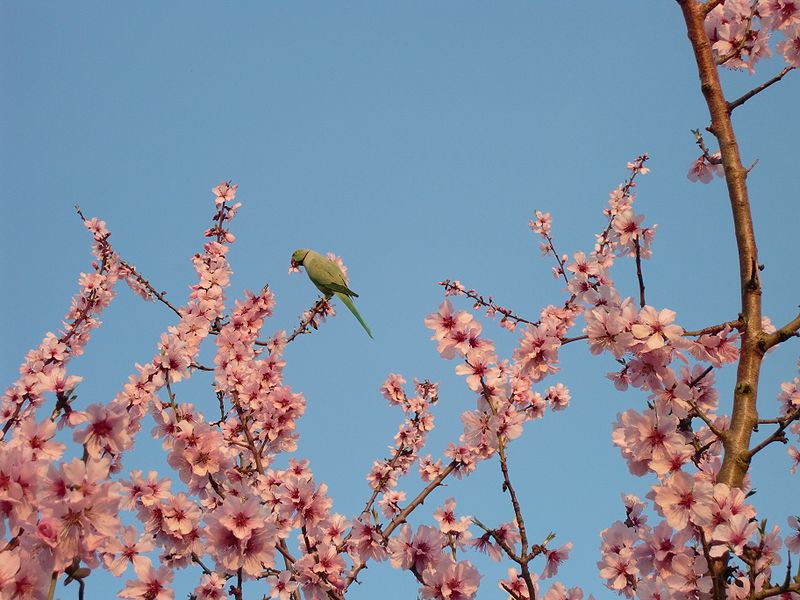
Image: Jonathan Cardy
With your average sweet almond you’ve got nothing to worry about, but bitter almonds, like cassada, yield poisonous hydrogen cyanide, and if not heat-treated properly can be seriously risky. As long as the cyanide’s been obliterated you’ll be okay, but munch on an untreated handful and death could swiftly follow. Thankfully the sale of bitter almonds is now strictly regulated to protect people from an early grave, so you’re unlikely to come across any raw ones. We’re sticking to raw sweet almonds!
1. Fugu
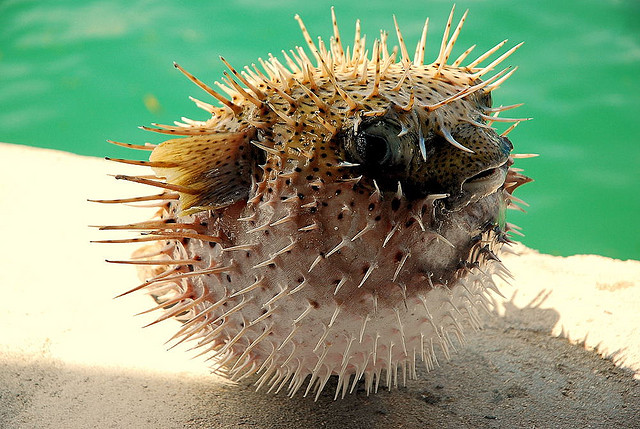
Image: notsogoodphotography
Though we love our bento-boxes full of healthy fare, there’s one Japanese fish we’d rather steer clear of: The Pufferfish. While still alive, the pufferfish has a cute, wide-eyed expression, but – as with most things – looks can be deceiving. Far from adorable, the pufferfish just happens to be the world’s most poisonous fish.

Image: Suguri F
To say the pufferfish has to be carefully prepared prior to consumption would be mild understatement, for its liver and ovaries are loaded with lethal quantities of tetrodotoxin. Chefs in Japan go through a strict 3-year training program, followed by exams with only a 35% pass rate; only then can they qualify to serve either fugu sashimi – the raw meat served in wafer-thin slices – or the deadlier puffer soup, fugu chiri. Lightheadedness and tingling of the lips are part of the ‘high’ of eating pufferfish. Incorrectly prepared and the poison from the organs can quickly induce dizziness, nausea, a rapid heart rate, then death, as the still-conscious victim’s muscles are paralysed, causing asphyxiation. While fatalities are surprisingly rare – most available pufferfish are safe to eat – at the risk of sounding controversial we’re going to say that while fugu dishes may be high in protein and low in fat, we need a bit more convincing that eating them is worth the risk.

